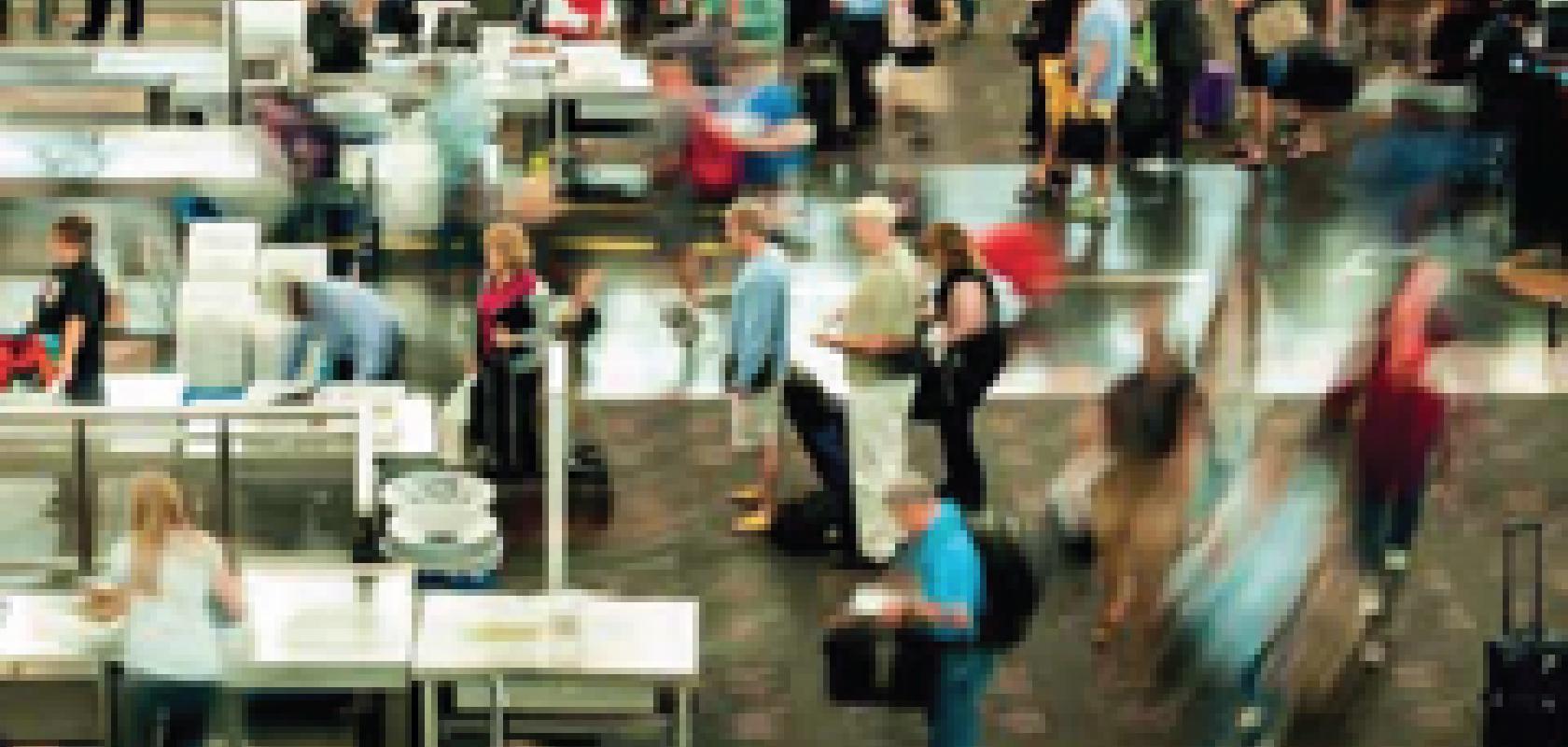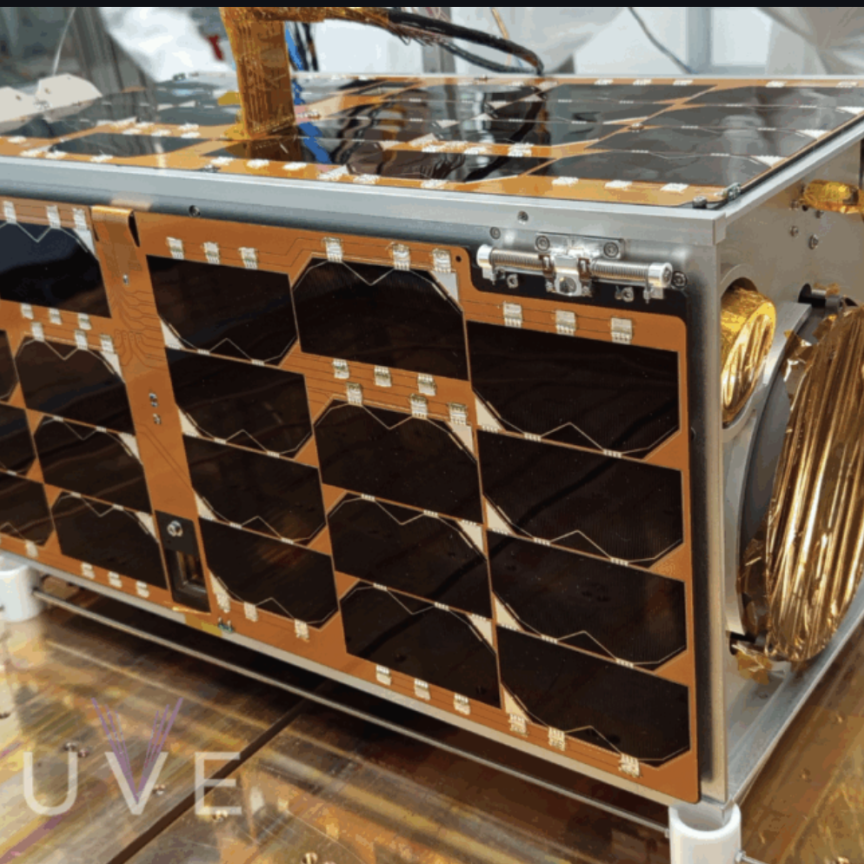In July, newspaper stories in Britain warned air travellers to ensure that their mobile phones and laptops were fully charged before setting off. According to the headlines, if the devices could not be powered up on demand, they would be confiscated by airport security.
In the same month came news of optical technologies that could lead to a relaxation of some airport security regulations in the future. A Raman spectroscopy instrument, developed by Cobalt Light Systems in the UK, and a device based on terahertz technology, created by Menlo Systems in conjunction with Philipp’s University of Marburg in Germany, are capable of scanning for liquid explosives at airports more effectively than any previous device.
Early in July, Cobalt Light Systems won the 2014 MacRobert engineering prize for its liquid scanner, the Insight100. The company is a spin-off from the UK Government-funded Science and Technology Facilities Council (STFC) and its new device has already been deployed in 65 airports across Europe. Unlike traditional optical scanners, it can detect hazardous substances through not just transparent containers, but opaque ones. It is hoped that in the next couple of years the device could allow airports to lift the current liquid ban.
In Cobalt’s device, a laser is directed at the liquid container, and the spectrum of light returned is analysed and cross-checked against a library of threats. As opposed to conventional Raman spectroscopy, however, the system uses spatially offset Raman spectroscopy (SORS), a technique developed by STFC’s Professor Pavel Matousek at the Rutherford Appleton Laboratory, and it is this variance of Raman that allows opaque objects to be analysed in depth. ‘What [the technique] allows us to do in addition to just doing ordinary Raman spectroscopy, is to probe opaque media − by that I mean diffuse scattering media such as skin tissues, powders, or opaque bottles that you cannot see through − and to probe them in depth or through the wall barrier,’ explained Matousek, CSO at Cobalt and a STFC Senior Fellow. ‘Conventional Raman would be only applicable to the near surfaces of these objects,’ he said.
To be able to ‘see’ through opaque bottles in containers of up to three litres, Matousek and his team at the STFC analysed photons from a wider area of the bottle surface, and not just those close to where the laser was directed. ‘Instead of shining laser light and looking at the illuminated spot and collecting photons from that very spot, as you would with conventional Raman, we look sideways, around that illumination zone,’ Matousek said. ‘The further away you go from the zone, the more different penetration depths you are highlighting. This is because photons penetrating deeper are spread over a wider area on the surface of an object.
‘I could compare it to the stars in the sky,’ Matousek continued. ‘During the day you don’t see them, because you are dazzled by the sun radiation scattered in the atmosphere, but you can see them at night because the sun is not there. In a similar way, in conventional Raman you are dazzled by the surface of the object you are shining laser light on. By going sideways, you can block that dazzling radiation and see deeper.’
Since January, the airport scanner has been operational at 65 airports across Europe. The commercialisation of the technology, however, for use in an airport setting was not without difficulty, as Matousek pointed out: ‘The challenge was that with airport security you have to carry out the measurement within five seconds − take the measurement, analyse the data, and return either a green or red light. And, you have to do it in a safe manner in ambient conditions,’ he noted. The company who developed the device, Cobalt Light Systems, was spun out of the STFC’s Rutherford Appleton Laboratory in 2008 specifically for the purpose of commercialising the SORS technique invented by Matousek and his team at the facility. ‘There was a host of challenges − some were scientific, some were engineering. They were all tackled by Cobalt Light Systems recently.’
After successfully installing the Insight100 in Europe, Cobalt plans on deploying the system in airports across Asia and the United States. ‘A slightly different variant will be required for the US market, and we are working on that at Cobalt,’ said Matousek.
And, the company expects that in the near future, the instrument could help to lift the blanket ban for passengers carrying more than 100ml of liquid in their hand luggage. ‘It is hoped that in the coming years, there will be some gradual relaxation leading to ultimately the lifting of the restriction,’ Matousek noted.
Terahertz
A different technology has been employed for a handheld liquid scanner developed by Menlo Systems, a company spun-out of the German Max-Planck-Institute for Quantum Optics with the aim of converting optical technologies into user-friendly products.
The device, created in collaboration with the Philipps University of Marburg, uses terahertz spectroscopy to differentiate between hazardous and non-hazardous fluids within a matter of seconds. The terahertz time-domain spectrometer is the first instrument of its kind to demonstrate that liquids can be distinguished by terahertz spectroscopy, and relies on the fact that most polymers are transparent to terahertz radiation; therefore the liquid contents of plastic bottles can be analysed without having to open them.
The terahertz region of the electromagnetic spectrum, however, has commonly been a challenge to operate in up until now, explained Dr Patrizia Krok, from international sales of terahertz systems at Menlo Systems: ‘This spectral range, in the past, has been described as a “terahertz gap” because it has been very difficult to achieve − there are very few methods to produce terahertz radiation directly.’
Therefore, the team developed an indirect approach for generating the terahertz radiation. Inside the handheld unit, there is a terahertz spectrometer consisting of a Menlo Systems 1,560nm femtosecond fibre-coupled laser containing two semiconductor antenna modules – one for terahertz generation, the other for detection – at each end. The ultrafast laser is focused onto the terahertz-generation antenna, and free carriers (electrons) are generated. Because of an applied voltage, a small current and electromagnetic wave is produced. ‘This electromagnetic wave is excited and will be emitted,’ explained Dr Michael Schwerdtfeger, PhD student of Experimental Semiconductor Physics at the Philipps University of Marburg.
The technique works in a similar way to detect the radiation, except no external voltage is applied. The detection antenna receives the terahertz waves reflected from the liquid and converts them into electrical signals. ‘The electromagnetic field causes a movement in the electrons in the semiconductor material,’ said Schwerdtfeger. ‘This current is measured − it is proportional to the electromagnetic field of the terahertz pulse.’
At airports, a broad range of substances can pose a threat. For this reason, various liquids were investigated during development − particularly pure water, water-ethanol solutions, and liquids that become explosive when mixed with other substances − to build up a database of terahertz measurement data for these potential hazards.
In an airport scenario, bottles would be scanned by first holding the instrument close to the plastic container, and pressing a button on the measurement head which contains both antenna modules. The terahertz radiation is emitted from the measurement head and is reflected from both the air-to-bottle and the bottle-to-liquid interfaces, into the spectrometer. The first terahertz signal has only been reflected from the bottle surface, so this measurement is discarded. ‘The second terahertz pulse is reflected off the surface of the liquid; therefore it carries information about the liquid itself,’ explained Krok. ‘Depending on the absorption and dispersion parameters of the liquid, the terahertz pulse will have a characteristic shape, and one can then identify the substance by comparison to the database created earlier.’
All components of the system were integrated at the Braunschweig University of Technology and at the Philipps University of Marburg. The antenna modules, supplied by the Fraunhofer Heinrich Hertz Institute (HHI), were developed especially to work at the telecom wavelength, which allowed for the use of cost efficient telecom parts, according to Schwerdtfeger: ‘[The antenna modules] were designed for laser wavelengths of 1.5µm, which is the main telecom wavelength,’ he said. ‘This allowed us to use optical fibres from the telecom market − there are many cheaper components available at this wavelengths.’
The miniaturised 1,560nm fibre-coupled femtosecond laser was customised by Menlo Systems for this project, and is important for ensuring the spectrometer is small and robust enough for this type of security application. ‘For a portable system in a rough environment, a laser is required that is compact, very stable, and which can be easily integrated,’ Krok pointed out. ‘The entire fibre coupled architecture of the handheld demonstrator system is highly tolerant towards mechanical stress during transportation and use, making it reliable for applications in the field.’
Now that the concept of using terahertz spectroscopy to scan liquids has been proven for the first time by the German team, it is hoped that such a device could be used in airports in the future, according to Krok.


